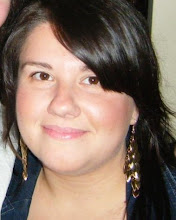I literally don't know where to start! Everyday has about a 1000 things packed into it, that I actually feel like I have 2 days in 1, and I am sure all of my HST 2009 colleagues would agree.
Last night we had a lovely walk into France, as we are right on the border, for pizza and pasta. It was wonderful to be out and about and walking through the amazing sunflower fields.(although there were a lot of bees!). The weather reminds me of Melbourne, four seasons in one day. The morning is fresh and cool, by lunch time the sun is beating down and then by 4pm the humidity has built up so much there is an afternoon storm. The nights then stay warm until the early morning. I have not mentioned so far the beautiful surrounds of CERN, but sitting in the evening having dinner with Mount Blanc in the background is something that amazes me, so beautiful. I am really looking forward to going into Geneva to explore that beautiful city also!
Today was our first lecture on Particle Detection which was kindly done by Frank Hartmann from Univeritat Karlsruhe. The hour long lecture was mind boggling and really allowed me to see how the nuclear physics that we undertake in high school is but the tip of the ice berg. Although similar principles in particle detection are seen in many of the detectors, from Geiger Counters, 1950's Cloud Chambers, the 1960's Bubble Chambers, the Wire Chambers used in the 80's and the solid state detecors used in the 90's. They all still do the same job, their primary reason for existence is to help determine the momentum and charge of particles that are decaying.
In the afternoon we visited CMS, another of the four detectors of the LHC. This is the smallest in volume, but the heaviest in mass of all the detectors. The CMS and ATLAS (another of the detectors) will hopefully give us some answers about Higgs particle and whether we are taking Physics in the right direction. To check out some great images of CMS check out this link, which was given to the HST team by one of our wonderful guides, Francois: http://www.hatred.ch/index2.php?album=Altera%20Partem/CMS
Over dinner I had the pleasure of meeting Gron, who will be the HST 2009 Physicist in Residence. He is a first year Mechanics and Relativity lecturer at Birmingham University in the UK. His immediate presence sparked amazing conversations about his role as a researcher for the LHC and about high school curriculum and how Universities see the state of education. I am sure that he will spark many more conversations and many more questions about everything related to Physics and Education in the coming weeks.
Tomorrow we are joining the Summer School Students, who come from all over the world as third year Physics students, to study further into particle physics. So tomorrow is our lecture on "Particle Physics for Dummies" ;) Just an introduction to all the exciting particles of matter from Frank Close, from Oxford University in the UK.
With the amount of information that we are all receiving and taking in, I am not sure how I will be able to sleep! Bonne nuit :)
LHC Control Button
press in case of emergency
Subscribe to:
Post Comments (Atom)
Steven Weinberg

Winner of the 1979 Nobel Prize in Physics
The Geneva Treasure Hunt
The Standard Model

Q: What is France famous for?
A: Particle Detectors & Sunflowers
Microcosm Exhibit
Look...I'm in the Collider!
First Day at CERN

LHC Dipole Magnet @ CERN

This comment has been removed by the author.
ReplyDeleteHi Juliana
ReplyDeleteYour daily reports are sensational.The descriptions of what you see and do give a crystal clear picture of the learning you are involved with. Tomorrow I will be talking about you with 5 classes.
Wow, I am really pleased that the blog is so informative. Please let me know if you would like anymore information added to the reports and I will do that!
ReplyDelete